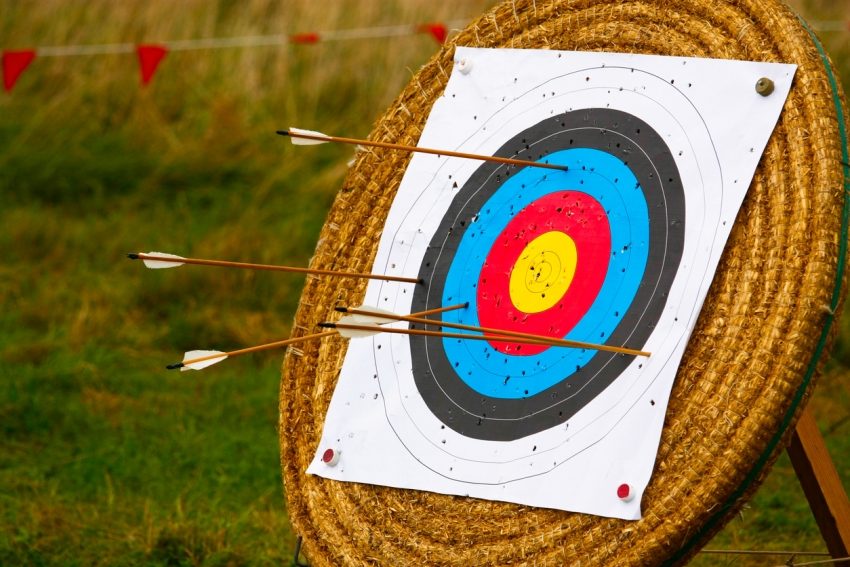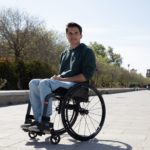What is Wheelchair Archery?

Wheelchair Archery is a track and field sport that requires very little, if any, adaptation to play after your spinal cord injury.
Many athletes can play without any adaptive equipment at all. And although it’s considered a spring sport, there are indoor ranges to use that can make archery an activity you can enjoy year-round.
Wheelchair Archery Similarities To Traditional Archery
The biggest similarity to traditional archery is that in wheelchair archery, you use a bow and arrow to hit a target that is a specific distance away. The rules and scoring of wheelchair archery are the same as in Olympic archery.
The target is typically 90m away from the archer. The maximum target size is 122 centimeters, and the target is divided into ten rings with a golden bullseye. Points are earned for each arrow that strikes the target. The bullseye is worth ten points, and the outer ring is worth one point. The closer the arrow hits to the bullseye, the more points the arrow is worth.
Wheelchair Archery Differences from Traditional Archery
In wheelchair archery, adaptive equipment may not be necessary, but it is allowed. Some of the adaptations allowed are:
- Mechanical releases for the bow
- Mouth tabs, slings, or bow mounts for people who have limited arm movement
- An assistant may nock the arrow onto the bow
- Strapping can be used to keep the body supported and on the chair
- Sighting aids may be used
- Equipment may be used such as a wheelchair bow stringer, bow sling, amputee adapter device, or adapted archery bow
Who Is Allowed To Participate?
Almost all athletes with a disability can play based on the amount of adaptive wheelchair archery equipment that is available. As long as you can find an adaptation that makes it possible for you to shoot the bow at the target, you can participate.
The Paralympics divides archery into four categories. These are based on the function the athlete has in his upper and lower body. The Paralympic athletes usually use recurve bows, but there is also a separate category for athletes that shoot a compound bow, which is a more modern form of bow.
The categories are:
ARST – (Archery Standing) These are archers who can stand, and have no disabilities in the arms, but they may have some weakness in the legs.
ARW1 – (Archery Wheelchair 1) These archers compete from a wheelchair. They have limited movement of their arms and very poor control of their legs.
ARW2 – (Archery Wheelchair 2) There archers compete from a wheelchair and are completely paralyzed in the lower part of their body
Paralympic archery has been represented in the games since 1960. It gained international recognition as a Paralympic sport, when, in Barcelona in 1992, Paralympian Antonio Rebollo lit the Olympic and Paralympic flames by shooting a flaming arrow.
World Archery Europe
The World Archery Europe web page is a great place to visit if you want to give archery a try. It has information on upcoming events in Europe, as well as articles and updates on the latest records. There are also photos and videos for you to enjoy, that help you get a better idea of what archery is like
While this website is not just for wheelchair archery, it includes para-archery. World Archery Europe sets the rules for Paralympic Archery, and the wheelchair sport is well represented in their news and information. Their site includes the forms you can use to apply for para-archery records, as well as other forms and rulebooks, such as the Para-Archery Cup circuit rules.
Wheelchair Archery takes a lot of skill, and it requires a lot of practice. But it is a sport you can enjoy by yourself, or with friends. And if you become really good at it, you may earn yourself a place traveling with the Paralympic team.
Author: Annie Beth Donahue is a professional writer with a health and disability focus.








